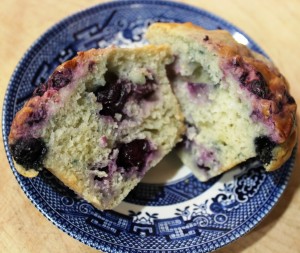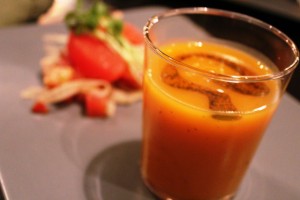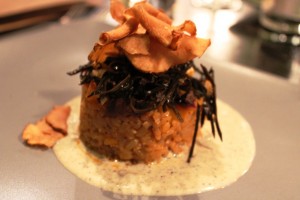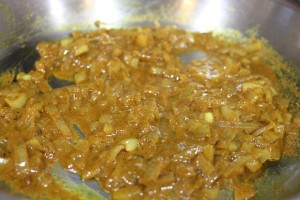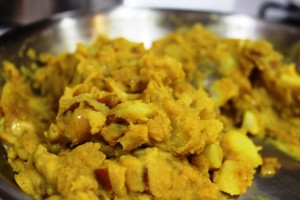
Today we have the treat of having a guest post from my very own sister, Lucy Gillespie. A while back, Lucy called me, upset about an experience she had had in her workplace. She works in a mediation (or ‘alternative dispute resolution’) center in Baltimore, MD. She has been trying to think through the experience she had (below) and after this weekend’s post about the pig slaughter I witnessed, she felt ready to contribute to the blog. In her free time, Lucy is a musician (check out her website here)–writes, plays and records her own music–and a kick-ass cook (hopefully, if we’re lucky, Lucy will do some guest recipe posts in the future). From Lucy:
I recently got involved in the non-profit sector of the workforce in Baltimore, MD. A pretty staggering jump from cooking for a living to now being on the front lines of alternative dispute resolution (ADR) leading the country in non-violent conflict resolution in one of the most notoriously violent cities. Though the stereo-types about Charm City have, in some ways, proven true – I have come across some of the most open, liberal, and socially aware people I’ve ever met. The non-profit world tends to draw socially aware people, and in an ADR program that partners with the city and State Penitentiaries: people fighting for social justice are everywhere. At this point I’m sure it’s unclear how this ties into Serenity in the Storm’s fight for Animal Rights/Welfare.
Surrounded by like-minded liberal folks at work, who are all trained to be reflective listeners and to pick up on subtle emotional cues, I rarely find myself feeling uncomfortable about anything that could be construed as racist, sexist, homophobic, or any of the other “ists” or “phobias”. This is perhaps why the following story had such an impact on me.
Let me begin by saying that I am not vegan. I am not even really fully vegetarian (though eating meat hasn’t happened in quite a while and dairy is becoming less and less a part of my diet.) I’m not confident that I will ever really become completely vegan.
I was sitting around at work, reading Wikipedia, as I tend to do if there’s a lull, and my co-worker was looking at pictures of tea-cup pigs, when another co-worker joined the conversation. She began telling a story about growing up in the South, down the road from a farmer who owned a pig. She reeled us in by saying that the pig only had three legs and was a spunky little guy with a big heart. One night when the farmer and his family were sleeping, the farmhouse caught fire. The pig went in to wake the children and the farmer’s wife and led them to safety before returning for the farmer, and saving the entire family before the place collapsed in a ball of flames. When the fire department had gotten the blaze under control, a fireman approached the farmer saying “That is quite some pig you got there! Little guy’s a hero! But what happened to his leg? Did he lose it doing something equally as heroic?” and the farmer replied “Oh, a pig that good… you don’t want to eat him all at once!”
We had all been duped. Instead of a heartfelt story about a brave little pig whose gumption and spunk rescued a family, it was a joke. Everyone around me laughed, while I remained silent and began to feel uncomfortable, like I had just listened to some disgusting racist joke. How could this group of socially aware people, with giant hearts, and a drive for social justice, be so trapped in such a mainstream idea about animals in the same way that misogynists talk about women? How could you remark at how adorable a tea-cup pig is and then in the same breath basically make a joke about cutting its leg off, eating it, and keeping it alive to continue eating it? Navigating the reality of that joke is why I found it disturbing. I’m sure no one in that conversation was thinking about cutting off an actual pig’s leg, cooking it up and eating while the pig bled out in the corner.
I thought about that joke for weeks trying to pinpoint what about it made me uncomfortable and even more so, why I was the only one who seemed to be bothered by it. I think at some point, I lumped social justice and animal rights or welfare into the same category, but nobody else in my immediate network did. In a room full of socially aware people, there was a glaring blind spot or gap where the animal population fits.
Thanks, Lucy, for an interesting and thought-provoking post. I’m so glad that Lucy brought up the topic of how we think about social justice, and the importance of including animals in our understanding of social justice issues. Also, I think Lucy’s post addresses nicely the potential violence of language and humor. How we talk about animals (jokingly or not) governs how we treat animals and place them in our moral reckonings. Have you all had any experiences of feeling uncomfortable with the way animals are being talked about? How do you deal with these situations?
 Follow
Follow





